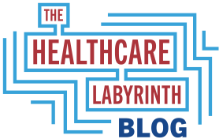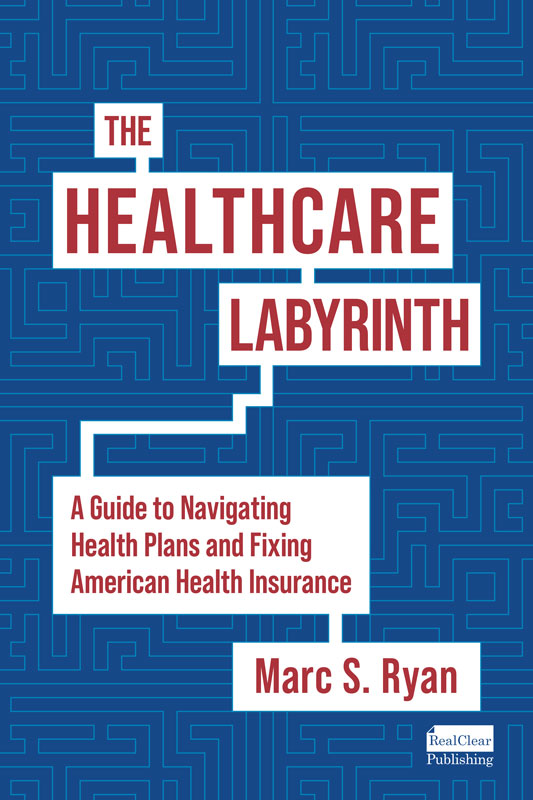After what I went through, I asked Santa to bring me a rational drug pricing system for Christmas . But not even the great St. Nick can sort this mess out.
Drug shortages or supply disruptions are in the news of late, with serious concerns over the availability of critical cancer and other life-saving drugs. While my drug supply story is not nearly as serious, I write about it today as I have been dealing with it over the Christmas holiday and it shows the pure insanity of our drug supply and pricing system in America.
I am withholding the names of the pharmacies and the pharmacy benefits manager (PBM) as not doing so would be unfair to an individual drug chain or PBM. What we see here occurs across the drug supply chain. I am disclosing the drug manufacturers as this helps make clear the complexity of drug pricing.
So here goes:
The actors in my drug shortage Christmas story
—Brand manufacturer GlaxoSmithKline, now known simply as GSK. GSK manufactures the brand version of my drug, Advair Diskus. GSK is based in the U.K.
—Independent generic producer Prasco, which manufactures the authorized generic of Advair Diskus (fluticasone propionate and salmeterol inhalation powder diskus). It released the drug in partnership with GSK. Prasco is based in the United States.
—Mylan and Viatris, maker of another generic of Advair Diskus called Wixela Inhub (fluticasone propionate and salmeterol inhalation powder diskus). Mylan (which made Wixela) combined with Upjohn (then owned by Pfizer) to form a new company, Viatris. Viatris is based in the United States.
—A pharmacy benefit manufacturer (PBM) who contracts directly with my former employer group and provides retiree drug coverage for me.
—Various pharmacies that I called over the last week or so.
—GoodRx is a healthcare company that (among other things) sponsors a drug discount card program, website, and app.
—Marc Ryan, intrepid blogger and life-long asthmatic. On Advair Diskus since the early 2000s. Incredible drug for me as I achieved great asthma maintenance and do not suffer attacks. I rarely use rescue inhalers because of it. I am running out of Advair and have a few weeks left. I am using it once a day for some days to see if I can extend out what I have a few more days (Doc, I know you told me not to, but …).
My drug shortage Christmas story
I have all my drugs on auto-fill and I stop by the pharmacy counter once a quarter when I receive my text that my refills are ready. That came in a few days before Christmas. My rich retiree plan allows 90-day refills at a preferred local pharmacy and I pay $0 per maintenance script as I am compliant with the health education program in my plan.
On my visit, I noticed one script was not filled as usual. The pharmacist indicated that my Advair Diskus was unavailable. I had never been impacted by a drug shortage or disruption before.
The healthcare wonk in me went into action. Here is what I did:
—I asked at my regular drug store what was up. They checked the wholesaler site and told me it simply said the drug was unavailable right now and there could be a disruption or shortage issue. They told me to check back at the end of the month. I checked with other pharmacies and received similar messages, although one told me to transfer my script and they would try to get it for me. I await word, but got my doctor to ensure I had scripts at multiple pharmacies in case they cannot. Options in this case are important.
—I combed the internet. While Advair is not in the drug shortage database from the Food and Drug Administration (FDA), I did find references to shortages for asthma inhalers in general and the fact that several are going off patent. This is leading some brand drug makers to stop or phase down production and supply. Specifically on Advair, it appears there was a manufacturing disruption of some sort in September or October. In addition, GSK seems to be phasing out (or at least down in terms of production) a number of medications that have gone off patent, which could be contributing to the issue.
—I called GSK’s customer support line and found the drug maker very unhelpful. GSK went out of its way to indicate there is no shortage per se. There were vague statements regarding 2024 wholesaler agreements and expected lower production next year due to expected demand. Again, I have not faced these types of delays before, though. Then I asked about any generics the representative was familiar with and that opened him up. He immediately stated that there is a GSK-authorized generic and he could transfer me to that line. I hit some sort of trigger that allowed GSK to share more info with me! Generic drug maker Prasco had launched an authorized generic in partnership with GSK, a Fluticasone/Salmeterol Diskus Inhaler.
—In my transfer call to Prasco, the representative indicated that the drug in all strengths was available but could not help me more than this. Check with your drug stores is all the representative would say.
— I checked back on the internet to see if there were more generics. When I last checked a few years back there were none and it didn’t really matter to me financially because I get the maintenance med at $0.00. Aha, I found another generic out there called Wixela Inhub by Mylan/Viatris.
—I went to my formulary site expecting both to appear on some generic tier (again, not that it mattered financially). It came up: “Drug Not Covered.” How could that be – it is a generic! After all, that is what PBMs like putting on their formularies to save money. And then it hit me – REBATES!!!!! The PBM must be receiving a generous rebate on a high-cost brand drug and it makes the net cost to the PBM about the same or lower than the generic price (there are usually no rebates for generics). Brand drug makers boost rebates, and engage in other unseemly activities, to stop generic drug uptake as their brands approach patent life or go off patent. It dawned on me that was why I was always receiving a brand even with Florida’s “dispense as a generic when available” law.
—I called my PBM (under direct contract with my former employer for my retiree coverage). I found out that in fact the generic is not covered – only the brand is. “But there is a clear supply disruption,” I said. “Can’t I get the generic due to the disruption. The generic is likely about the same net cost? Surely you don’t want an ER bill due to uncontrolled asthma hitting my employer group.” The smart and well-trained customer service representative quickly pivoted to: “I might be able to get it for you through mail order.” She came back on and said mail order would ask my doctor to send a new prescription to the mail-order facility and they would seek to fill this by the end of the month.” In my multiple conversations with the PBM call center, they were all professional and caring. They live within the guidelines set out for them.
—I sought to get a hold of Mylan for Wixela Inhub, but failed a few times and then received an out-of-office for Monday and Tuesday. The luxuries of being in the drug-making business.
–As I said, I hunted around various pharmacies to find out that indeed Advair was on various forms of backorder and unavailability. Wholesalers had little or no information to give their pharmacy clients. As for Wixela Inhub, it, too, appeared to have some unavailability, but one dosage was available might help me if I had to go this direction. Prasco’s generic appears available in all dosages. But that does not solve my problem. Even if I can get the generic, it is not on formulary and thus I would have to pay totally out-of-pocket. Everyone at the pharmacies were also helpful and caring.
—I went to GoodRx to see prices. Good Rx told me the following. I group things in ranges for simplicity’s sake. These are the prices on the market with a GoodRx discount (Self-pay would be well more at a pharmacy without GoodRx or another discount card). As you can see below, If I face an Advair shortage now or in the future, I would need to pay as much as $200 per month for the generic. Early entry generics often are costly. More importantly, based on the numbers below, my quick calculations suggest that GSK is offering my PBM a rebate of 60% to 80% to maintain formulary placement and have the generic excluded. Indeed, a 12/22/2023 Reuters story shows that GSK will drop the price of Advair by 70 percent as of January 1 and get out of the rebate business for the drug ( https://www.reuters.com/business/healthcare-pharmaceuticals/gsk-cut-us-prices-advair-valtrex-lamictal-2023-12-22/ ). Funny how math works.
Dosing Brand Advair Generic Advair (2 Makers)
100/50 $300 to $360 $70 to $105
250/50 $400 to $500 $90 to $130
500/50 $500 to $600 $135 to $200
–I have my doubts that the PBM’s mail order shop will have any better luck this week, but perhaps they have greater volume and inventory and will come through. Nonetheless, just in case and to hedge against a longer-term issue, I called back my PBM and submitted a prior authorization (PA) exception (allowed under my plan but not many) for the generic due to the brand drug supply issues. A day after a holiday, my primary care physician dutifully fulfilled the exception request, and within an hour the PBM had denied my request. The reviewing pharmacist was simply following the rules as laid out by the PBM. I will grieve, appeal, and go to an external appeal to prove my point on generics vs. brands.
So a few observations:
—I am a well-informed healthcare consumer and the story above had me confused. Imagine how those with low health literacy and significant social barriers feel when navigating the healthcare labyrinth?
—There is a fundamental lack of price transparency in our drug system. It leads to all sorts of behind-the-scenes machinations that confuse the consumer and lead to increased costs.
—The fact that we have considerable drug shortages or supply disruptions in America shows that our healthcare drug system is broken. It stems from a lack of accountability and responsibility and misaligned incentives throughout the supply chain. Sometimes functioning free markets even see shortages. The drug world is not a free market.
—Brand drug makers have engaged in various and sundry activities to keep generics from coming to market. They have a playbook. These include agreements with generic makers to delay introduction, various patent and other lawsuits to delay entry, the rebate arrangements with PBMs, and more. Indeed, in the face of new guidance from the Federal Trade Commission (FTC) related to patent declarations to the drug market, GSK just announced it would remove some patents on inhalers (including Advair) from the Food and Drug Administration (FDA) Orange Book ( https://www.fiercepharma.com/pharma/gsk-amneal-and-kaleo-pull-patents-fda-listing-after-ftc-challenge#:~:text=GSK%20has%20removed%20four%20patents,listings%20can%20delay%20generic%20challengers ). The accuracy of the Orange Book is key to decision-making on whether generic makers will invest to create an equivalent formulation. If they see too many supposed patent ownership rights, they may decline and allow the brand drug maker to keep its market share with high-priced brand drugs. Brand drug makers clearly abused these declarations until now.
—Advair came to market in the early 2000s. It has enjoyed great sales for over 20 years now but has been obscenely priced. Part of the delay in a generic Advair introduction can be pegged to dramatic launch failures in two cases, but some of it can be tied to the patent and other games of GSK as well as the rebates.
—PBMs play the game too. They talk about the need for and push generics. That is part of their value proposition and I agree with it. But that is only until it doesn’t make sense – aka, when a brand drug maker offers a great rebate deal. To hell with the consumer (see below)! We like rebates! In truth, by entering into these deals, PBMs are helping brand drug makers delay generic entry. This is against the PBMs’ long-term interests.
—The rebate arrangements can be especially injurious to consumers. While I have a $0 cost-share for maintenance drugs, many with disease states who need maintenance drugs pay large amounts each month based on formulary placement. PBMs continue to place brands with heavy rebates on formularies instead of generics. This means that consumers are levied brand-level copays or co-insurance rather than lower copays that would exist on generic tiers. Some PBMs have reformed and have begun pegging cost-sharing for such brand drugs to generic tiers. But not all have.
—Better price transparency and ensuring generics come to the market without all sorts of delays would likely also solve some or much of the drug shortage problem we see today. Businesses could plan, invest, and not face considerable barriers to entry.
What do other developed world countries do about drug pricing?
No matter their system type (socialized medicine, single payer, or private affordable access – see my November 30 blog on what all this means ( https://www.healthcarelabyrinth.com/american-healthcare-is-a-huge-outlier-in-terms-of-costs-and-outcomes/ ), the other developed countries bring drug makers to the table at the national level and negotiate price as a condition of the drug being offered in their healthcare system. Throughout their drug approval, assessment, and pricing processes, they also tend to ask two other key questions not asked in the United States:
–Is the drug more effective than other drugs in the market for the given disease state or condition?
–Is the drug cost-effective?
Some countries also use international reference pricing in their process, where prices in other nations are looked at when setting a price in the nation for inclusion on the national drug list.
Wouldn’t it be nice, if we could look at one list and see a transparent price? Everyone would know exactly what they pay at the point of sale and what the real cost of a drug is.
Conclusion
In summary, brand drug makers use various legal and other means to stall generic introduction and then use rebates, agreements with other parties, and other arrangements to stop generic penetration as long as possible. PBMs play a part in the game by agreeing to endorse brands over generics by receiving retrospective rebates. In many cases (again, not all), the consumer pays higher prices at the point of sale and someone else (the PBM and others) makes off with the rebate cash.
As for me, I will survive. The mail order or a local pharmacy may come through. We shall see. I suspect that the formulary at some time in 2024 will include generics given the move by GSK to reduce Advair prices (and therefore rebates) dramatically as of January 1. If not, my rich retirement plan would allow me to switch to an even-more-expensive brand drug and pay $0. I don’t want to do that. I want the generic of my existing medication or at least have a reliable supply of the brand (which finally is coming down in price after more than 20 years). But because of all the skullduggery that exists in the drug world, my doctor and I may be forced to do what is worse for the healthcare system. Imagine that.
And this is how I spent part of my Christmas holiday. It was a little more “Bah! Humbug!” than I wanted.
( See my other recent blog on drug pricing and PBM reform here: https://www.healthcarelabyrinth.com/pbm-transparency-and-reform-is-a-big-trend-in-the-american-healthcare-system/ . My book, The Healthcare Labyrinth (available at this site), has a full chapter on what is wrong with America’s drug system and how to reform it. )
#drugpricing #pbms #branddrugmakers #brands #generics #bigpharma #pricetransparency #rebates #healthcarereform
1/12/2024 Update: At the end of December, a local pharmacy did come through for me and I got a one-month supply of Advair. Due to the drop in price announced by GSK for Advair (and the end of rebates), my PBM did the right thing and now covers the generics on the formulary. Advair is covered but at a much higher price than the generics. I did not file an appeal or a grievance given the change. My refill for the generic is in the third week of January. I hope there are no supply issues with the generics. I will update you again.
1/28/2024 Update: With the change in the formulary for 2024, I was able to obtain my 90-day supply of the generic, Wixela. No supply issues of the generic at this time.
— Marc S. Ryan





